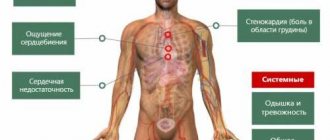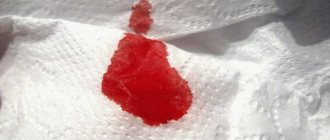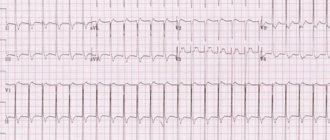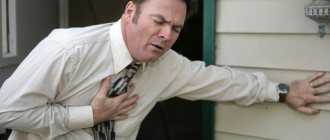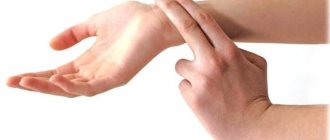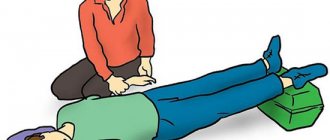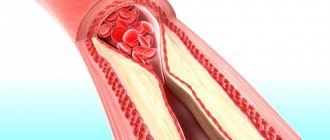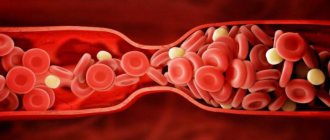Tachycardia is a medical term used to determine the fact of a single or repeated increase in heart rate in a person against the background of existing cardiovascular health problems or as a result of stress and physical activity. A precedent when the heart begins to beat at a frequency of over ninety beats per minute can act as both a consequence and a precursor to the progression of diseases dangerous to human health.
The most important task during a tachycardia attack is the need for urgent stabilization of the heartbeat with the help of tablet medications. Tablets for tachycardia can currently be bought at any pharmacy, and most of them are sold without a prescription. In this article, we will analyze whether it is worth relying on the “advice” of pharmacists when choosing a drug, which drugs from a diverse range are most effective for tachycardia, what cardiologists recommend taking for problems of a tachycardia nature.
Basic antiarrhythmic drugs
Tachycardia is a rapid heartbeat when the pulse reaches more than 90 beats/minute. During such an attack, due to the randomness of myocardial contractions, blood flows unevenly into the ventricles of the heart, which provokes ischemia, hypoxia, and the development of heart failure.
The situation is corrected with antiarrhythmic drugs of different pharmacological groups. The treatment regimen depends on the reasons that caused the tachycardia. Only a doctor prescribes medications. Self-medication is unacceptable, as it can lead to serious complications.
Group of myocardiocyte receptor blockers
The essence of the action of antiarrhythmics is the normalization of the transport of potassium, sodium, and calcium ions through cell membranes, which is disrupted during tachycardia. An imbalance in the flow of microelements into and out of the cell affects the speed of electrical impulses through the conduction system of the heart. Its duration and the time required to restore the sinus node are disrupted. Taking these points into account, all drugs for tachycardia are divided into 5 classes, which doctors use to correct different types of rapid heartbeat:
- Sodium channel blockers.
- Beta blockers.
- Potassium channel blockers.
- Calcium channel blockers.
- If-channel blockers.
| Class and individual representatives | Mechanism of action |
| Class I – sodium blockers: A-group: Quinidine, Novocainamide B-group: Lidocaine C-group: Ethacizin, Ethmosin, Propafenone, Flecainide, Allapinin | The essence of the action is to block the transport of sodium ions, which stabilizes the properties of the membrane, slows down excitation, and the heart begins to contract more slowly. The ability of the myocardium to independently generate electrical impulses for muscle contraction is lost |
| Class II - beta blockers: selective (act only on the myocardium): Betaxolol, Propranolol, Atenolol, Metoprolol, Bisoprolol, Egilok, Ritmilen; non-selective (also act on the bronchi and blood vessels): Pindolol, Oxprenolol; Vasodilators: Nebivolol, Labetalol, Carvedilol | The main mechanism is blockade of beta-adrenergic receptors of cardiomyocytes, slow conduction of electrical impulses through the myocardium, and decreased activity of the heart muscle. The point is that adrenaline and norepinephrine do not reach the myocardium, and the heart rate becomes lower. At the same time, the vascular wall relaxes, pressure drops, myocardial oxygen demand decreases, and the heart becomes more resilient. Read more about the mechanism of action of beta blockers |
| Class III - potassium blockers: Amiodarone, Sotalol, Dofetilide, Cordarone | Blockade of potassium transport into the cell inhibits the restoration of the original electrical potential, causing a slowdown in heart rate |
| Class IV - calcium blockers: Diltiazem, Verapamil, Corinfar, Foridon | The main action is to prevent the entry of calcium ions into angiocytes, which leads to their expansion, normalizes blood flow, and slows down the pulse. Read more about the mechanism of action of calcium channel blockers |
| Class V – if-channel blockers: Coraxan is a representative of the newest category of drugs with multi-vector effects, one of which is antiarrhythmic | The main effect is achieved by blocking the channels of the sinus node, which provides a negative chronotropic effect, reduces the frequency of ventricular contractions and myocardial ischemia |
Cardiac glycosides
Drugs from the group of cardiac glycosides are used in the treatment of tachycardia because they have ionotropic properties, that is, they are able to increase the duration of diastole, reducing the pulse. During systole, due to this, the release of blood volume increases, ischemia and hypoxia are stopped. Medicines are prescribed for tachyarrhythmias that accompany manifestations of coronary artery disease.
The most famous representative of cardiac glycosides is Digoxin, tablets of which are prescribed for tachycardia in patients with dystrophic changes in the myocardium. Reception is monitored by ECG.
Drugs in this category include Celanide and Digitalis. In emergency cases, use Strophanthin.
Sedatives
Tablets of the sedative group are included in drugs for the treatment of tachycardia due to their ability to relieve psycho-emotional stress. One of the reasons for rapid heartbeat is precisely psychosomatics.
Sedative drugs can be roughly divided into herbal remedies (Valerian extract, Deprim, Corvalol), synthetic (Afobazol, Adaptol) and combined (Novo-Passit, Persen).
All drugs are used in a complex therapy regimen for tachycardia of any origin. If the stress trigger of the pathology is precisely established, then it can be used as a monomedicine.
Antithrombotic agents
Drugs of the group of anticoagulants and antiplatelet agents are prescribed in case of development of tachycardia against the background of atrial fibrillation (atrial fibrillation). Unbalanced contractions of the myocardium create conditions for the formation of blood clots, which, when released into the bloodstream, can block the main vessels feeding one or another internal organ.
Antithrombotic drugs themselves do not reduce the pulse, but are prescribed to prevent possible complications. These include: Warfarin, Aspirin, Clopidogrel, Pradaxa, Eliquis, Xarelto. The drugs are prescribed by a doctor under the supervision of laboratory blood tests.
Let's sum it up
The variety of cardiac drugs on the modern pharmacological market is so great that it is almost impossible to name all the drugs used in medical practice. The article describes the most popular and effective drugs that are used in the treatment of tachycardia, however, it is worth understanding that their effectiveness can only be judged if they are used exclusively for medical indications, in accordance with medical regulations.
Self-selection of a drug may not only not give a visible positive result, but also act as the primary source of the development of additional health problems. Tachycardia is a serious manifestation of the cardiac system and requires an immediate visit to a medical facility to prescribe correct and comprehensive treatment.
Microelements for the heart with tachycardia
Vitamins and minerals have a strong impact on the functioning of the cardiovascular system. Micronutrient deficiency very often causes tachycardia and arrhythmia. Therefore, to prevent the development of such a situation, drugs for tachycardia are used in the form of vitamin and mineral complexes. Minerals are responsible for the functioning of the heart and blood vessels:
- magnesium, which prevent blood clots by normalizing metabolic processes and controlling blood viscosity;
- calcium, which normalizes myocardial contractile function;
- phosphorus – a conductor of nerve impulses;
- selenium, which increases local immunity, providing protection to heart cells and blood vessels;
- potassium that accompanies the generated electrical impulse through the myocardial conduction system.
Causes and classification
Tachycardia is not a disease, but a symptom, since it can occur as a manifestation of many diseases. The most common causes of tachycardia are disorders of the autonomic nervous system, endocrine system disorders, hemodynamic disorders and various forms of arrhythmia.
Conventionally, the causes of increased heart rate (heart rate) are divided into two categories - physiological (objective) and pathological (subjective) . It is necessary to be able to distinguish one from the other; a person’s health and life may depend on it.
A physiological increase in heart rate is provoked by one or another external influence; it is always temporary and disappears in an adult healthy person 5-7 minutes after the disappearance of the stimulus. This condition is not threatening to human health or, especially, human life. Most often, the development of a physiological condition occurs for the following reasons:
- physical activity;
- stress state;
- emotional state;
- sexual arousal;
- pain;
- staying in a hot room;
- rise to a considerable height.
A physiological increase in normal heart rate also occurs when drinking alcohol and caffeine, smoking, taking energy drinks and certain medications.
The pathological form develops as a symptom of a host of diseases, including:
- inflammatory pathologies of the heart;
- mechanical failures of the heart;
- diseases of infectious nature;
- intoxication of various origins;
- anemia;
- state of shock, heavy bleeding, traumatic lesions;
- thyroid disease (especially hyperthyroidism);
- lesions affecting the nucleus of the vagus nerve;
- neurocirculatory asthenia;
- pheochromocytoma;
- various congenital developmental anomalies.
Timely detection of a pathological increase in heart rate is necessary, since even under the conditions of modern medicine, only early diagnosis will help preserve the health and life of a sick person.
Doctors distinguish three types of this condition:
- sinus;
- paroxysmal;
- ventricular fibrillation.
Let's consider each type of tachycardia and its pattern on the ECG.
Sinus is diagnosed most often . This condition is characterized by an increase of 20-40 beats per minute in cardiac activity at rest, in which the correct rhythm is maintained under the control of the sinus node.
The problem arises when a failure occurs in the complex system of generating impulses of a given node, as well as when the process of conducting sinus impulses directly to the ventricles of the heart is disrupted.
Paroxysmal is a condition in which attacks (paroxysms) of the heartbeat increase to 140-220 heartbeats per minute due to ectopic impulses replacing the normal sinus rhythm.
This type occurs suddenly and just as suddenly stops; the attacks-paroxysms have different durations, but the regular rhythm is maintained.
Ventricular fibrillation is understood as a type of tachyarrhythmia in which irregular contractions of several grouped muscle fibers of the heart ventricles occur, uncoordinated and ineffective, since in this condition the ventricular parts of the heart do not “pump up” pressure, which causes the heart muscle to stop functioning as a pump for blood flow. .
The contraction frequency reaches and exceeds 300 per minute.
Tachycardia is also classified into supraventricular and ventricular, but these types are determined by specialists after a thorough examination of patients.
Features of treatment of tachycardia
Attacks of tachycardia lead to deterioration of heart function, high blood pressure, brain hypoxia, and the development of encephalopathy.
Hypoxia is especially dangerous for pregnant women, so timely antiarrhythmic therapy is extremely important to prevent such conditions and correct heart rate. In each specific case, the treatment of tachycardia has its own characteristics.
Emergency help at home
Sometimes it is necessary to urgently stop an attack of tachycardia in order to avoid serious consequences. This happens if palpitations do not occur for the first time, develop against the background of long-existing somatic pathologies, or there is an already developed scheme for relieving the condition.
Stopping a rapid pulse that is gaining momentum at home is not so difficult. The algorithm of actions before the doctors arrive is as follows:
- call an ambulance;
- the patient is laid horizontally, with a pillow under his head so that it is higher than the level of his legs;
- the neck should be in a relaxed state, you should not bend your head too much, as the blood flow to the brain is disrupted;
- provide an influx of fresh air to prevent increasing hypoxia;
- a damp, cool towel is placed on the forehead, which reflexively slows down the pulse;
- free a person from tight accessories so that breathing is free;
- give 30 drops of sedatives dissolved in water to drink: Corvalol, Valocordin, Motherwort;
- you can press on the patient’s eyeballs with his eyes closed – the heart rate slowing reflex will work (take out the contact lenses!);
- you need to ask the person to hold their breath and cough;
- give a tablet for tachycardia, subject to a developed medication regimen.
If the attack passes before the doctors arrive, the doctors take a cardiogram and write out a referral for a consultation with a cardiologist. If the situation does not resolve, the patient is hospitalized (he always has the right to refuse this).
Drugs for tachycardia at normal blood pressure
Tachycardia with normal blood pressure is most often physiological in nature. Heart rate returns to normal when the provoking factor is eliminated: stress, physical activity.
But if the palpitations do not go away after this, the doctor and the patient are faced with the task of finding adequate pills for palpitations that do not lead to hypotension by reducing the pulse. This is especially true for sinus tachycardia, which is treated with beta blockers, which cause a drop in blood pressure.
Until recently, there was no alternative to these drugs. Today there is a new pharmaceutical group that can replace beta blockers in this case. The representative of innovation on the Russian market is Koraksan. Its foreign analogues are Bravadin, Vivaroxan, Raenom, which are used for the treatment of coronary artery disease.
The essence of the action is to slow down the heart rate without hypoxia due to stress or physical activity. In other words, the drug slows down the pulse without affecting blood vessels, and therefore blood pressure.
For hypertension
A difficult option is the selection of medications for tachycardia against the background of arterial hypertension. In this case, the main task is to reduce the tension of the vascular wall, relieve vasospasm, in order to prevent possible rupture with cerebral hemorrhage or ischemia with necrosis in AMI.
Taking such drugs for heart palpitations is lifelong. Although attacks of rapid pulse are rarely combined with an increase in blood pressure, they pose a great danger. They help to cope with it: Diroton, Corinfar, Enap, Verapamil.
For hypotension
Low blood pressure when combined with a rapid pulse threatens the development of cerebral edema. The essence of selecting drugs for tachycardia in this case is to increase vascular tone. The difficulty is that antiarrhythmic drugs, as a rule, reduce blood pressure. When such a scenario develops, doctors use:
- Grandaxin, as a drug that has a sedative effect;
- Mazepam – relieves nervous excitement, anxiety, aggression;
- Phenazepam is an anticonvulsant.
During pregnancy
The body of a pregnant woman experiences excessive stress on the heart and blood vessels. It is enough to remember that at this time, two circulatory systems work as a single whole, the volume of circulating blood doubles.
Tachycardia during pregnancy is a common occurrence. The problem of its relief is that medications, in principle, are not indicated during pregnancy, especially antiarrhythmic drugs that affect blood vessels and the heart.
But frequent heart contractions are dangerous for the fetus, so attacks should be removed. To do this, use anti-tachycardia drugs with the maximum degree of safety:
- Magne B6 (Magnelis B6) – cardiomyocyte regenerant;
- Valerian, Motherwort – herbal-based sedatives;
- Propranolol, Verapamil, which reduce the pulse - from the second trimester, after the formation of the placenta.
During menopause
For elderly patients, in addition to tablets for tachycardia, pine baths, reflexology, and bromine electrophoresis on the collar area are recommended.
Paroxysms are usually relieved with beta-blockers: Trazikor, Propranolol, Atenolol, Metoprolol, Bisoprolol, calcium blockers: Corinfar, Verapamil, Diltiazem.
Sedatives are prescribed in the form of tinctures of peony, hawthorn, motherwort, mineral complexes: Panangin, Asparkam, Doppel Hertz-active, metabolic drugs: Riboxin, for example.
Stopping an attack without drugs
In case of a tachycardia attack, it is recommended to massage the carotid artery
How to relieve tachycardia without drugs?
The instructions look like this:
- Remove the patient from compressive clothing. Take off his tie, unfasten his belt and the top few buttons of his shirt.
- Provide the person with a flow of fresh air. If it is cold outside, you are allowed to open a window or window in the next room.
- Ask the patient to take several deep breaths.
- Massage the carotid artery. It is located on the right, under the jaw. You need to massage at the point where it connects to the cervical artery.
- Immerse your face in cold water. The duration of the procedure is 1-2 seconds. This method allows you to reduce your heart rate.
If a person feels better, they should still visit their primary care physician.
Risk of complications, side effects
Drugs that slow the heartbeat and restore heart rhythm are prescribed after at least Holter monitoring of ECG and blood pressure. In some cases, a complex manipulation is indicated - transesophageal electrophysiological study (TEPE).
This is necessary in order to avoid serious complications if antiarrhythmics are prescribed not once, to stop an attack, but for life. In this case, it becomes necessary to take into account their interaction with other drugs, otherwise the following may develop:
- arterial thrombosis, causing a heart attack or stroke;
- heart failure (impaired myocardial contractility);
- presyncope and fainting;
- sudden death (possibly due to ventricular tachycardia).
"Persen": instructions for use
The price and reviews of this medication are of interest to many patients. "Persen" is a sedative medicine developed on the basis of extracts of valerian, peppermint and lemon balm. The drug is used to treat a variety of ailments, both as an independent medicine and as part of complex therapy.
The treatment regimen will depend only on the diagnosis and the individual characteristics of the patient.
According to the instructions, the product has a pronounced sedative and antispasmodic effect. The tablets effectively eliminate anxiety, irritability, and nervous system overstrain. The following conditions are direct indications for the use of Persen:
- stress;
- neuroses;
- vegetative-vascular dystonia;
- withdrawal syndrome when treated with stronger sedatives.
The manufacturer of the drug warns that if you have tachycardia and low blood pressure, it is strictly forbidden to take Persen (instructions for use).
The price and reviews of the drug have made Persen a truly popular sedative. The cost of one package (40 tablets) ranges from 340-380 rubles. The drug received mostly positive recommendations from both patients and specialists. "Persen" eliminates insomnia, normalizes heart rate during frequent attacks of tachycardia, and relieves anxiety.
Drugs that provoke tachycardia
To avoid an accidental attack of tachycardia, you should know everything about the drugs that can provoke it. The list is quite long:
| Name | When to use |
| Anagrelide | Bone marrow diseases |
| Aspirin and Oxycodone | Pain syndrome |
| Chlordiazepoxide | Tranquilizer |
| Clidinium bromide | Relieving bronchospasm |
| Dosulepin | Antidepressant |
| Ephedrine | Vasoconstrictor effect (including nasal drops) |
| Epinephrine | Non-glycoside cardiotonic |
| Epoprostenol | Relieves pulmonary hypertension |
| Moclobemide | Relieves an attack of angina |
| Nalmefene | Treats alcohol addiction |
| Niacin, Lovastatin and Simvastatin | Correctors of lipid metabolism, involved in the treatment of atherosclerosis |
| Nicardipine | Reduces blood pressure |
| Oprelvekin | Treats thrombocytopenia |
| Paliperidone | Antipsychotic drug |
| Phenoxybenzamine | Participates in the treatment of pheochromocytoma |
| Folotin | Antitumor agent |
| Pralidoxime | Used to treat poisoning by organophosphate and carbamate insecticides |
| Voriconazole | Antifungal drug |
Medication prescriptions
The immediate and long-term prognosis of IHD depends on the effectiveness of drug therapy. Mandatory components of treatment are discussed below.
Classification of pharmacological support agents:
- ACE inhibitors;
- antianginal;
- hypolipidemic;
- antithrombotic drugs;
- agents that stabilize myocardial metabolism.
Click on the picture to see it in full size.
ACE inhibitors
The action of drugs for the treatment of coronary heart disease is aimed at eliminating the symptoms of coronary artery disease and the risks of vasospasm, which ensures a stable level of pressure.
Literature
- Shubitidze I.Z., Tregubov V.G., Pokrovsky V.M. Comparison of the effectiveness of nebivolol and sotalol in patients with hypertension and ventricular arrhythmias. Eurasian Cardiology Journal. 2020.
- Fomina I.G. Cardiac RI disorders, 2003.
- Bunin Yu.A. Treatment of cardiac tachyarrhythmias. M. 2003.
- Almendral J., Castellanos E., Ortiz M. Update: Arrhythmias (V). Paroxysmal supraventricular tachycardias and preexcitation syndromes. Rev Esp Cardiol (Engl Ed). 2012.
- Camm CF, James CA, Tichnell C. et al. Prevalence of atrial arrhythmias in arrhythmogenic right ventricular dysplasia/cardiomyopathy. Heart Rhythm. 2013
Lyudmila Zhavoronkova
Higher medical education. 30 years of working experience in practical medicine. More about the author
All articles by the author
